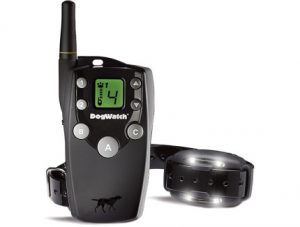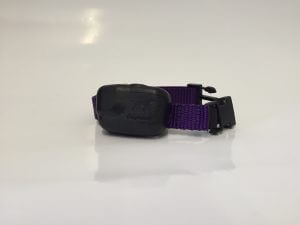What is an electric shock collar?
So what is an an electric shock collar?
Oh how ghastly an electric shock collar for pets! Firstly, we need to remove the words “electric and shock”. These words are misleading implying a degree of intensity which does not accurately reflect the nature of the stimulus. Shock is too much of an emotive word. These electric shock collars deliver an aversive stimulus but do not induce a state of shock. The stimulus is lower than the sensation delivered by a tens machine and is similar to the static shock received from a nylon carpet. It is not an electric shock that is delivered.
There are two types of “electric shock collar” – the handheld devices used for dog training and those linked to containment fences. One may well ask what the difference is between a remote trainer collar and a containment fence collar. There are principally 3 differences:
- The training levels are lower on a containment fence collar.
- With a containment fence the pet is in contro;l with a remote trainer a human is in control.
- The containment fence collars are small and lighter.
What are the benefits of a remote training collar?
Some may argue that there are no benefits to using a remote training collar. It is usually from the people who refer to the collars as “electric shock collars”. When used correctly by a qualified trainer these collars can be a life saver for many dogs. Dog’s that have not responded to solely positive training protocols and have behavioral issues can be re-trained with an e-collar. This may well save the dog from being euthanized or shot by a farmer. Respected dog trainer Jamie Penrith of Take the lead Training is a supporter and user of the collars has been instrumental in changing people’s opinions on their use. He has talked openly about the benefits and posted videos to his facebook page and you tube channels to demonstrate these devices.
Frustratingly many of those opposed to training collars have never even used or seen a collar in action. Just as people dogs are not a one size fits all and what works for one dog may not work for another. All dog training involves an element of negative reinforcement you cannot train a dog with a solely reward based training. Many well respected trainers use an advocate the use of these collars.
What are the benefits of a containment fence?
Freedom and safety are the key words to use when considering a containment fence. Again, an electric shock collar is completely inaccurate. The stimulation delivered by the containment fence is 250 times lower than a stock fence. For many cats and dogs they are a life-saver. Each year in the UK there are 300,000 pets killed or injured on the UK’s roads. Many owners have tried all types of traditional fencing and are concerned for their pets safety.
A loose dog can cause an accident or kill livestock; they could even be run over or stolen. Of course, some cats are happy to be kept indoors but other require their freedom. Also, housing cats solely indoors can cause obesity and urological problems. By installing a containment fence the owner can give their cat access to the garden but keep them safe and away from the road. A containment fence is also very flexible and can be used to fence areas that are not suitable for traditional fences at a fraction of the cost.
Those against electric shock collars will argue that the collars cause pain, fear and suffering and yet the scientific evidence speaks for it’s self. Owners and users of both remote trainers and containment fences are highly supportive of these products. The research into containment fences carried out by Lincoln University proved there were no adverse welfare affects and bizarrely until Feb 2018 DEFRA maintained that there was no evidence to support a ban for the use of remote trainers collars. In August 2018 the Government announced that they intend to ban remote trainer collars but exempted containment fences. This seems a strange position to take when there have been no new studies. Why the U-turn?
To learn more about our fences call us on: 03450 623 623 or email us on: info@dogfence.co.uk today.















